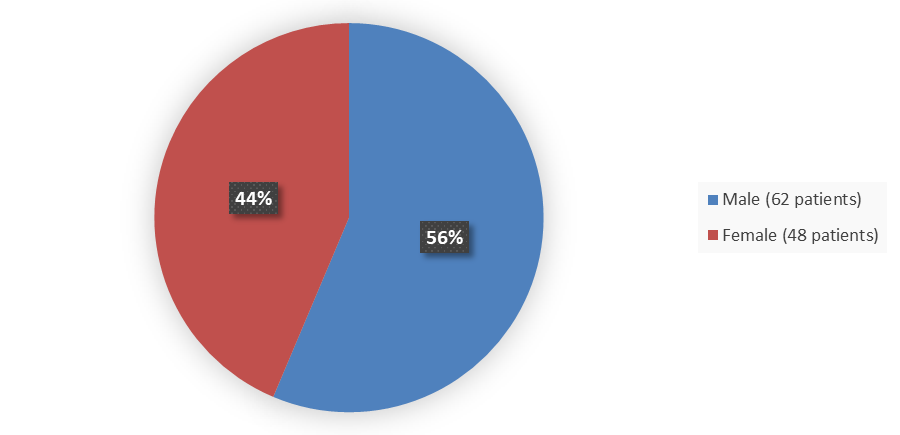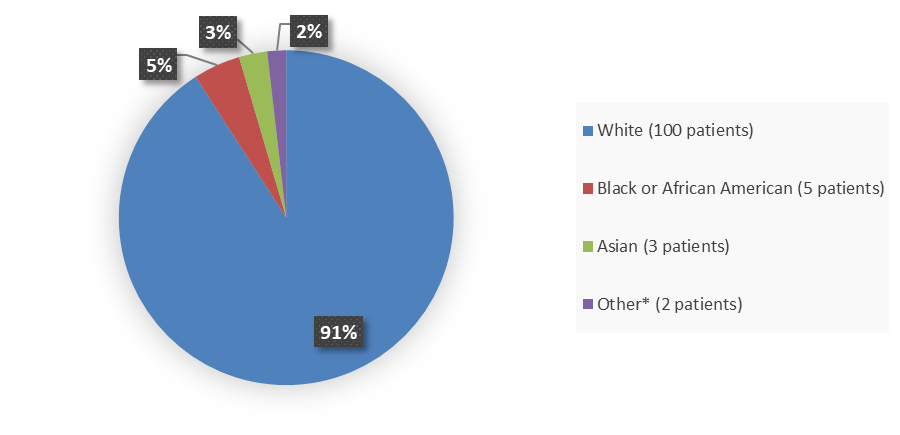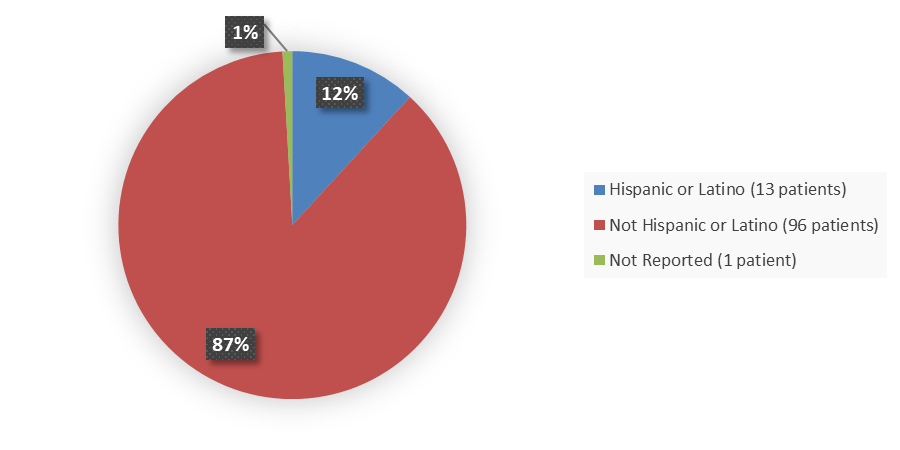Drug Trials Snapshots: TECVAYLI
HOW TO USE THIS SNAPSHOT
The information provided in Snapshots highlights who participated in the key clinical trials that supported the original FDA approval of this drug, and whether there were differences among sex, race, age, and ethnic groups. The “MORE INFO” bar shows more detailed, technical content for each section. The Snapshot is intended as one tool for consumers to use when discussing the risks and benefits of the drugs.
LIMITATIONS OF THIS SNAPSHOT
Do not rely on Snapshots to make decisions regarding medical care. Always speak to your healthcare provider about the benefits and risks of a drug.
Some of the information in this Snapshot is for presentation purposes and does not represent the approved conditions of use of this drug. Refer to the TECVAYLI Prescribing Information for all of the approved conditions of use of this drug (e.g., indication(s), population(s), dosing regimen(s), safety information).
Snapshots are limited to the information available at the time of the original approval of the drug and do not provide information on who participated in clinical trials that supported later approvals for additional uses of the drug (if applicable).
TECVAYLI (teclistamab-cqyv)
(tek vay' lee)
Janssen Biotech, Inc.
Approval date: October 25, 2022
DRUG TRIALS SNAPSHOT SUMMARY:
What is the drug for?
TECVAYLI is an antibody that is used to treat a form of blood cancer called multiple myeloma. It is to be used in adult patients whose cancer came back after, or did not respond to, at least four prior treatment regimens, which included a proteasome inhibitor, an immunomodulatory agent, and an anti-CD38 monoclonal antibody to treat their multiple myeloma.
How is this drug used?
TECVAYLI is given as an injection under the skin by a healthcare provider. You should be hospitalized for 48 hours after each of the first 3 doses, which includes “step-up dose 1,” “step-up dose 2,” and the first “treatment dose.” After you complete the first 3 doses, TECVAYLI will be given as an injection under the skin by a healthcare provider once a week.
Who participated in the clinical trials?
The safety of TECVAYLI is based on evidence from a clinical trial which enrolled 165 patients with multiple myeloma whose disease came back after, or did not respond to, at least 3 previous treatment regimens, who received TECVAYLI at the recommended dose. The efficacy of TECVAYLI is based on 110 patients. The trial was conducted at 39 sites in 10 countries in Europe and North America. The same trial was used to assess safety and efficacy.
How were the trials designed?
One clinical trial provided data for the approval of TECVAYLI. The trial enrolled patients with multiple myeloma whose disease came back after, or did not respond to, at least three previous treatment regimens. All patients in the trial received TECVAYLI until their disease progressed or the side effects became too toxic. The benefit of TECVAYLI was measured by the proportion of patients that achieved a clinically relevant improvement in their disease (overall response rate).
How were the trials designed?
The efficacy and safety of TECVAYLI was evaluated in one clinical trial in 165 patients with multiple myeloma whose disease came back after, or did not respond to, at least 3 previous treatment regimens, including a proteasome inhibitor, an immunomodulatory agent, and an anti-CD38 monoclonal antibody. The safety population included 165 patients who received TECVAYLI at the recommended dose. The efficacy population included 110 patients who received TECVAYLI at the recommended dose. The primary endpoint in the trial was overall response rate (ORR), defined as the proportion of patients who achieved a partial response or better, as determined by an independent review committee based on the International Myeloma Working Group Criteria.
DEMOGRAPHICS SNAPSHOT
Figure 1. Baseline Demographics by Sex - Efficacy Population
Source: Adapted from FDA Review
Figure 3. Baseline Demographics by Race - Efficacy Population
Source: Adapted from FDA Review
*Other includes Multiple (N=1), Other (N=1)
Figure 5. Baseline Demographics by Age - Efficacy Population
Source: Adapted from FDA Review
Figure 7. Baseline Demographics by Ethnicity - Efficacy Population
Source: Adapted from FDA Review
Who participated in the trials?
Table 6 summarizes the efficacy and safety populations from the clinical trial.
Table 6. Demographics of Patients in the Trial
| Demographic Parameter | TECVAYLI Efficacy Population N=110 n (%) |
TECVAYLI Safety Population N=165 n (%) |
|---|---|---|
| Sex | ||
| Male | 62 (56) | 96 (58) |
| Female | 48 (44) | 69 (42) |
| Race | ||
| White | 100 (91) | 134 (81) |
| Black or African American | 5 (5) | 21 (13) |
| Asian | 3 (3) | 3 (2) |
| Other | 2 (2)* | 7 (4)Ɨ |
| Age group, years | ||
| <65 | 52 (47) | 86 (52) |
| 65 to <75 | 40 (37) | 55 (33) |
| ≥75 | 18 (16) | 24 (15) |
| Ethnicity | ||
| Hispanic or Latino | 13 (12) | 15 (9) |
| Not Hispanic or Latino | 96 (87) | 144 (87) |
| Not reported | 1 (1) | 5 (3) |
| Unknown | 0 | 1 (1) |
| Region | ||
| Europe | 81 (74) | 98 (59) |
| North America | 29 (26) | 67 (41) |
Source: Adapted from FDA Review and FDA Analysis of Clinical Trial Data
*Other includes Multiple (N=1), Other (N=1)
Ɨ Other includes Multiple (N=1), Other (N=2), Not Reported (N=4)
What are the benefits of this drug?
In the trial, 68 of 110 patients (62%) treated with TECVAYLI experienced an improvement in their multiple myeloma. For 91% of patients who responded, the improvement lasted at least 6 months; for 67% of patients who responded the improvement lasted at least 9 months.
TECVAYLI was approved under FDA’s accelerated approval program, which provides earlier patient access to a promising new drug while the company continues to conduct clinical trials to confirm that the drug works well.
What are the benefits of this drug (results of trials used to assess efficacy)?
The efficacy of TECVAYLI was evaluated by ORR, as determined by an independent review committee based on the International Myeloma Working Group Criteria.
Table 1. Efficacy Results
| Parameter | TECVAYLI N=110 |
|---|---|
| Overall response ratea, n (%) | 68 (61.8) |
| 95% CI | 52.1, 70.9 |
| Complete response or betterb | 31 (28.2) |
| Very good partial response | 32 (29.1) |
| Partial response | 5 (4.5) |
| Duration of response, months | |
| Median (95% CI) | NE (9.0, ∞) |
Source: TECVAYLI Prescribing Information
a Overall response rate = stringent complete response + complete response + very good partial response + partial response
b Complete response or better = Stringent complete response + complete response
Abbreviations: CI, confidence interval; NE, not estimable
Were there any differences in how well the drug worked in clinical trials among sex, race and age?
- Sex: TECVAYLI was similarly effective in males and females.
- Race: The number of patients of races other than White was small; therefore, differences in how TECVAYLI worked among races could not be determined.
- Age: TECVAYLI worked similarly in patients younger than 65 years of age and between 65 and 74 years of age. The observed effect was similar in patients aged 75 and older. However, very few patients aged 75 years and older were studied in order to determine whether there are differences in the effectiveness of TECVAYLI among patients younger and older than 75 years of age.
Were there any differences in how well the drug worked in clinical trials among sex, race, and age groups?
Table 2 summarizes subgroup analysis of ORR. Because the number of patients in each subgroup was relatively small, the subgroup analyses are considered exploratory.
Table 2. Subgroup Analysis of Overall Response Rate
| Subgroup | Overall Response Rate | ||
|---|---|---|---|
| N | n (%) | 95% CI | |
| All Patients | 110 | 68 (61.8) | 52.1, 70.9 |
| Sex | |||
| Male | 62 | 39 (62.9) | 49.7, 74.8 |
| Female | 48 | 29 (60.4) | 45.3, 74.2 |
| Race | |||
| White | 100 | 60 (60) | 49.7, 69.7 |
| Black or African American | 5 | 5 (100) | 47.8, 100 |
| Other* | 5 | 3 (60) | 14.7, 94.7 |
| Age, years | |||
| <65 | 52 | 33 (63.5) | 49, 76.4 |
| 65 to <75 | 40 | 24 (60) | 43.3, 75.1 |
| ≥75 | 18 | 11 (61.1) | 35.8, 82.7 |
Source: FDA Analysis of Clinical Trial Data
* Other includes Asian (N=3), Multiple (N=1), Other (N=1)
Abbreviations: CI, confidence interval
What are the possible side effects?
TECVAYLI may cause side effects that are serious, life-threatening, or lead to death, including cytokine release syndrome (CRS) and neurologic problems, including a neurologic problem called immune effector cell-associated neurotoxicity syndrome (ICANS). Because of CRS and neurologic problems, including ICANS, TECVAYLI is available only through a drug safety program called the TECVAYLI Risk Evaluation and Mitigation Strategy (REMS). Other serious side effects include liver problems, infections, low neutrophil counts, allergic reactions and injection site reactions, and harm to an unborn baby. The most common side effects of TECVAYLI are fever, muscle and joint pain, injection site reactions, tiredness and weakness, upper respiratory tract infections, nausea, headache, pneumonia, diarrhea, and low blood cell counts.
What are the possible side effects (results of trials used to assess safety)?
Table 3 summarizes the adverse reactions in the 165 patients who received TECVAYLI at the recommended dose in the clinical trial.
Table 3. Adverse Reactions (≥10%) in Patients Who Received TECVAYLI
| Adverse Reaction | TECVAYLI N=165 |
|
|---|---|---|
| Any Grade % |
Grade 3 or 4 % |
|
| General disorders and administration site conditions | ||
| Pyrexia | 76 | 3# |
| Injection site reaction1 | 37 | 0.6# |
| Fatigue2 | 33 | 2.4# |
| Chills | 16 | 0 |
| Pain3 | 15 | 1.8# |
| Edema4 | 13 | 0 |
| Immune system disorders | ||
| Cytokine release syndrome | 72 | 0.6# |
| Hypogammaglobulinemia5 | 11 | 1.2# |
| Musculoskeletal and connective tissue disorders | ||
| Musculoskeletal pain6 | 44 | 4.2# |
| Bone pain | 16 | 3# |
| Infections | ||
| Upper respiratory tract infection7 | 26 | 2.4# |
| Pneumonia8* | 24 | 15 |
| Urinary tract infection9 | 11 | 5# |
| Gastrointestinal disorders | ||
| Nausea | 25 | 0.6# |
| Diarrhea | 21 | 2.4# |
| Constipation | 18 | 0 |
| Vomiting | 12 | 0.6# |
| Nervous system disorders | ||
| Headache | 25 | 0.6# |
| Motor dysfunction10 | 16 | 0 |
| Sensory neuropathy11 | 15 | 1.2# |
| Encephalopathy12 | 13 | 0 |
| Vascular disorders | ||
| Hypotension | 18 | 1.2# |
| Hemorrhage13* | 12 | 1.8 |
| Hypertension14 | 12 | 4.8# |
| Respiratory, thoracic, and mediastinal disorders | ||
| Hypoxia | 18 | 1.8 |
| Cough15 | 15 | 0 |
| Cardiac disorders | ||
| Cardiac arrhythmia16 | 16 | 1.8 |
| Metabolism and nutrition disorders | ||
| Decreased appetite | 11 | 0.6# |
| Renal and urinary disorders | ||
| Acute kidney injury17 | 11 | 3.6 |
Source: TECVAYLI Prescribing Information Adverse reactions were graded based on CTCAE Version 4.03, with the exception of CRS, which was graded per ASTCT 2019 criteria.
1 Injection site reaction includes application site erythema, injection site bruising, injection site cellulitis, injection site discomfort, injection site erythema, injection site hematoma, injection site induration, injection site inflammation, injection site edema, injection site pruritus, injection site rash, injection site reaction, and injection site swelling.
2 Fatigue includes asthenia and fatigue.
3 Pain includes ear pain, flank pain, groin pain, oropharyngeal pain, pain, pain in jaw, toothache, and tumor pain.
4 Edema includes face edema, fluid overload, fluid retention, edema peripheral, and peripheral swelling.
5 Hypogammaglobulinemia includes hypogammaglobulinemia and hypoglobulinemia.
6 Musculoskeletal pain includes arthralgia, back pain, muscle discomfort, musculoskeletal chest pain, musculoskeletal pain, myalgia, neck pain, non-cardiac chest pain, and pain in extremity.
7 Upper respiratory tract infection includes bronchitis, influenza like illness, nasopharyngitis, pharyngitis, respiratory tract infection, respiratory tract infection bacterial, rhinitis, rhinovirus infection, sinusitis, tracheitis, upper respiratory tract infection, and viral upper respiratory tract infection.
8 Pneumonia includes COVID-19 pneumonia, enterobacter pneumonia, lower respiratory tract infection, metapneumovirus pneumonia, pneumocystis jirovecii pneumonia, pneumonia, pneumonia adenoviral, pneumonia klebsiella, pneumonia moraxella, pneumonia pneumococcal, pneumonia pseudomonal, pneumonia respiratory syncytial viral, pneumonia staphylococcal, and pneumonia viral.
9 Urinary tract infection includes cystitis, cystitis escherichia, cystitis klebsiella, escherichia urinary tract infection, urinary tract infection, and urinary tract infection bacterial.
10 Motor dysfunction includes cogwheel rigidity, dysgraphia, dysphonia, gait disturbance, hypokinesia, muscle rigidity, muscle spasms, muscular weakness, peroneal nerve palsy, psychomotor hyperactivity, tremor, and VIth nerve paralysis.
11 Sensory neuropathy includes dysesthesia, hypoesthesia, hypoesthesia oral, neuralgia, paresthesia, paresthesia oral, peripheral sensory neuropathy, sciatica, and vestibular neuronitis.
12 Encephalopathy includes agitation, apathy, aphasia, confusional state, delirium, depressed level of consciousness, disorientation, dyscalculia, hallucination, lethargy, memory impairment, mental status changes, and somnolence.
13 Hemorrhage includes conjunctival hemorrhage, epistaxis, hematoma, hematuria, hemoperitoneum, hemorrhoidal hemorrhage, lower gastrointestinal hemorrhage, melena, mouth hemorrhage, and subdural hematoma.
14 Hypertension includes essential hypertension, and hypertension.
15 Cough includes allergic cough, cough, productive cough, and upper-airway cough syndrome.
16 Cardiac arrhythmia includes atrial flutter, cardiac arrest, sinus bradycardia, sinus tachycardia, supraventricular tachycardia, tachycardia, and ventricular tachycardia.
17 Acute kidney injury includes acute kidney injury and renal impairment.
# Only grade 3 adverse reactions occurred.
* Includes the following fatal adverse reactions: hemorrhage (n=1), pneumonia (n=3)
Abbreviations: ASTCT, American Society for Transplantation and Cellular Therapy; CRS, cytokine release syndrome; CTCAE, Common Terminology Criteria for Adverse Events
Were there any differences in side effects among sex, race and age?
- Sex: The occurrence of side effects was similar in males and females.
- Race: The number of patients of races other than White was small; therefore, differences in side effects among races could not be determined.
- Age: The occurrence of side effects was similar in patients younger than 65 years of age and between 65 and 74 years of age. Differences in the occurrence of side effects among patients 75 years of age and older could not be determined because of the small numbers of patients aged 75 and older.
Were there any differences in side effects of the clinical trials among sex, race, and age groups?
Table 4 and Table 5 summarize the adverse reactions by subgroups in the 165 patients who received TECVAYLI at the recommended dose in the clinical trial. There were too few patients in the subgroups by race to determine differences in side effects by race.
Table 4. Summary of Adverse Reactions by Sex
| Adverse Reaction Category | Males N=96 n (%) |
Females N=69 n (%) |
|---|---|---|
| Any AR | 96 (100) | 69 (100) |
| Grade 3 or 4 AR | 93 (97) | 59 (86) |
| Serious AR | 51 (53) | 38 (55) |
| Fatal AR | 7 (7) | 11 (16) |
| CRS | 69 (72) | 49 (71) |
| Neurologic AR | 50 (52) | 44 (64) |
Source: Adapted from FDA Review
Abbreviations: AR, adverse reaction; CRS, cytokine release syndrome
Table 5. Summary of Adverse Reactions by Age
| Adverse Reaction Category | <65 Years N=86 n (%) |
65 to <75 Years N=55 n (%) |
≥75 Years N=24 n (%) |
|---|---|---|---|
| Any Grade AR | 86 (100) | 55 (100) | 24 (100) |
| Grade 3 or 4 AR | 82 (95) | 50 (91) | 20 (83) |
| Serious AR | 47 (55) | 29 (53) | 13 (54) |
| Fatal AR | 11 (13) | 5 (9) | 2 (8) |
| CRS | 64 (74) | 38 (69) | 16 (67) |
| Neurologic AR | 50 (58) | 30 (55) | 14 (58) |
Source: Adapted from FDA Review
Abbreviations: AR, adverse reaction; CRS, cytokine release syndrome
GLOSSARY
CLINICAL TRIAL: Voluntary research studies conducted in people and designed to answer specific questions about the safety or effectiveness of drugs, vaccines, other therapies, or new ways of using existing treatments.
COMPARATOR: A previously available treatment or placebo used in clinical trials that is compared to the actual drug being tested.
EFFICACY: How well the drug achieves the desired response when it is taken as described in a controlled clinical setting, such as during a clinical trial.
PLACEBO: An inactive substance or “sugar pill” that looks the same as, and is given the same way as, an active drug or treatment being tested. The effects of the active drug or treatment are compared to the effects of the placebo.
SUBGROUP: A subset of the population studied in a clinical trial. Demographic subsets include sex, race, and age groups.




